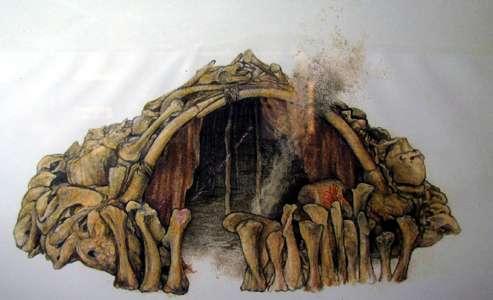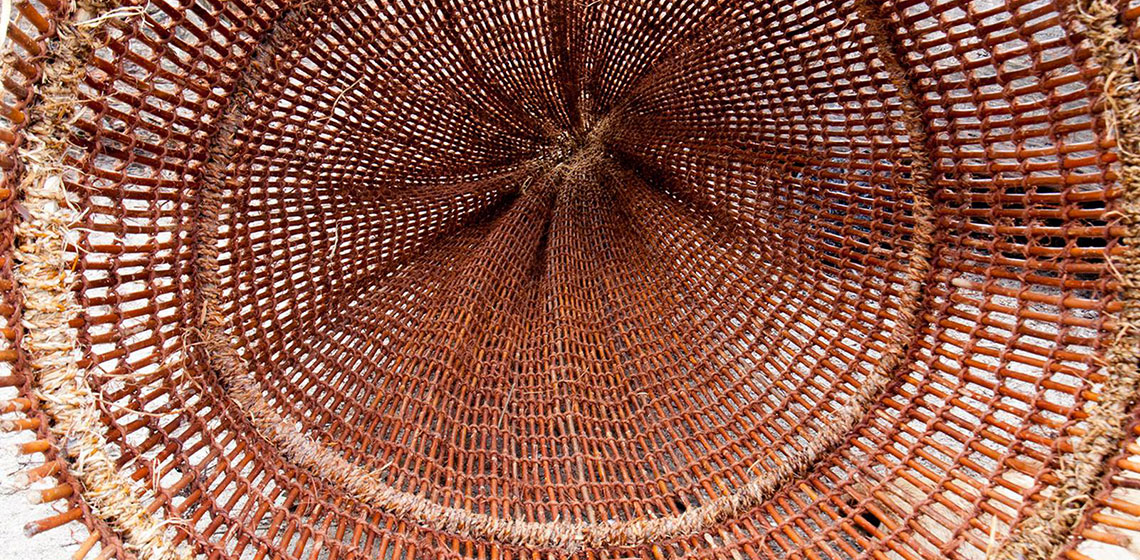
Neathar Technology
by Cab DavidsonTechnology Levels
Neathar are not a single people or culture. Each tribe approaches the life in a different way, with subtle differences in the materials and tools that are used. Tribes vary in technological level from simple hunter-gatherers with no permanent habitation, through nomadic herding cultures, to more settled primitive farming and fishing communities.
The unifying aspects of their technology revolve around materials. With few exceptions (such as firing pottery), Neathar make tools from materials that are in essence unchanged by the process. Wood, stone, bone, antler etc. are chemically unchanged by being worked into tools. Where they can find metals in native form (noble metals found naturally in a metallic state such as gold, silver and copper) these materials are worked with a degree of expertise, but few Neathar tribes are able to extract any form of metal from ore. While this hugely limits the range and utility of tools and weapons they can produce, to an extent they compensate for this by knowing how to craft a bewildering array of tools from the simple materials around them. A Milenian, Antalian or Schattenalfen left without arms and equipment in the wilderness may well be in peril, whereas any Neathar can equip themselves with the rudements needed for survival in a hostile world within a few hours.
While no two Neathar tribes are quite alike, tribes can be classed based on their technological capability, from paleolithic (the most primitive tribes), through mesolithic (mid-development) to neolithic (the most advanced tribes with the most developed technologies).
Technology of the Paleolithic Neathar
Paleolitic Neathar - Homes and Habitation
Being non-agrarian, the paleolithic peoples tend not to have long established sites of permanent habitation, and many must travel far and wide to hunt. Most are nomadic, some are semo-nomadic, but their requirement for shelter to remain warm and dry are the same as those of any other people. Thus they make use of natural shelters (trees, caves, rocky overhangs, etc.). Such locations tend to be used seasonally, often being revisited by generations of Neathar. Where there is a specific resource that allows a tribe to maintain a permanent settlement, that resource being tradable for food and other resources (for example a good fishing site or a flint mine) they are capable of constructing reasonable quality wood, mud brick and turf homes, in which permanent hearthstones are to be found on which fires to cook, light and heat the homes are found.

Mammoth Bone Home. Source: Mezhirich / Mezhyrich / Mejiritch /Mejiriche/Межиріч - Mammoth Camp
But even among the Neathar, the paleolithic tribes are the acknowledged masters of constructing shelter from the most unexpected materials, and tribes basing a semi-nomadic life around seasonal shelters constructed in mammoth, bison, or even dinosaur bones and skins are known. These shelters are very robust considering the tools available for their construction, and rely on the close fit of materials and simple sinew and twine to remain upright. Among the paleolithic Neathar are tribes that carry their whole, animal hide based shelters and travel as entire communities, and others where hunting parties travel far and wide from seasonal settlements.
It is noteworthy that while their encampments may appear primitive and uncomfortable, the paleolithic Neathar understand and value both comfort and insulation. Where they make camp in caves, they frequently construct shelters inside to keep condensation on cave walls dripping back onto them, and to allow them to heat a smaller space. Middens for waste are kept away from sleeping and food preparation spaces, and spiritual spaces are valued above almost all others. The spirituality of the paleolithic Neathar peoples, living a life more intimately entwined within the natural world than any other humans, is very much one that shows through in all habitation decisions.
Paleolithic Neathar Technology - Traps and Snares
Different tribes of paleolithic Neathar employ varying hunting techniques, but all share an understanding of how best to use the environment to their advantage. This includes running prey along natural barriers (lakes, rivers, cliff sides), and utilisation of traps and falls. This is especially true of tribes that specialise in larger prey, be it elk, buffalo, mammoth or dinosaur. Put traps are commonly employed by such tribes, with spikes (punji sticks) used in the bottom of such traps to immobilise prey. The art of hunting using such traps involves driving prey along defined routes to maximise the chance of them falling in, and this is a surprisingly complex task.
Tribes that take smaller game tend towards the use of simple snares and rock fall traps (literally being a rock propped up on a stone with a catch to make it fall when prey animals disturb it). Individually such traps are unreliable, but can be set in huge numbers to catch sufficient game feed a larger tribe. Twisted fibre traps are used for catching birds, hollow branches for snakes and eels, in fact any means by which an animal may be captured or entangled is utilised by the paleolithic neathar.
Those by rivers and beside the ocean learn the movements of fish, and as well as catching with nets may also set quite sophisticated traps for fish and crustaceans therein. Where possible simple weirs and pools are constructed using rocks available on river and sea beds to channel fish into shallows and narrow passages to and into traps therein. Such traps employing wood fibres, plant fibres and sinew are remarkable in that they are the most advanced textiles produced by any of the paleolithic Neathar, and can be variously set by wading out or using rafts to reach deeper water, and are (as for traps for smaller game) used in large numbers to gather sufficient food for the tribe.

Fish trap. Source: Reconstructing a Prehistoric Fish Trap